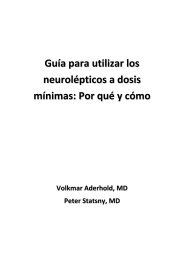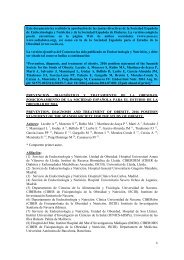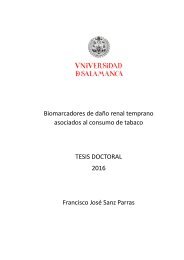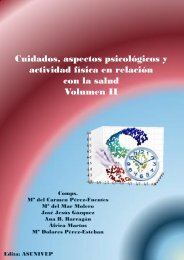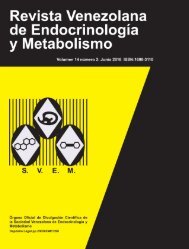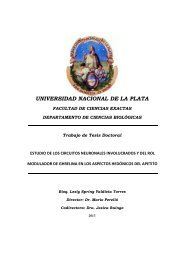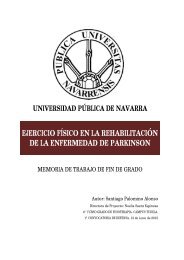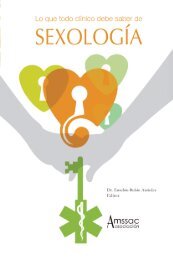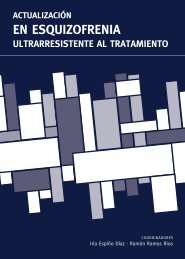Noviembre-Diciembre
156_v40n6(1)
156_v40n6(1)
You also want an ePaper? Increase the reach of your titles
YUMPU automatically turns print PDFs into web optimized ePapers that Google loves.
498 - Farm Hosp. 2016;40(6):496-503 Eva González-Haba Peña et al.<br />
Figure 1. Flow diagram of the study design: comparative branches<br />
and safety points analyzed<br />
there are no published data with ChemoCLAVE ® . There<br />
is only one study comparing ChemoCLAVE ® , PhaSeal TM<br />
and OnGuard ® (B. Braun Medical Inc., Bethlehem, PA)<br />
using radioactive technetium. The authors found significantly<br />
more volume of leakage with ChemoCLAVE ® .<br />
However, the study only analyzed the connection between<br />
vial and syringe, and the sampling methodology<br />
required touching the membranes connection. The vial<br />
access membrane of PhaSeal TM is more inaccessible and<br />
this may affect the results 19 .<br />
The main purpose of this work was to compare the level<br />
of environmental contamination generated during the<br />
preparation and administration of cytostatic drugs under<br />
actual working conditions using different valve closed-systems<br />
and their combinations. Other secondary objectives<br />
were to determine the actual impact on the overall time<br />
of preparation of cytostatics that have these systems and<br />
select the most efficient combination of components.<br />
Methods<br />
This comparative study on the preparation of fluorescein<br />
mixtures with different variants of closed-systems<br />
was conducted in a hospital that has a Pharmacy service<br />
(PS) with a central processing unit of cytostatic drugs<br />
that made, in 2015, a total of 50.695 antineoplastic preparations.<br />
The PS has an anteroom for the storage and<br />
preparation of the material, a passage room, and two<br />
clean rooms with three BSC class II type B for the preparation<br />
of chemotherapy. The clean room complies with<br />
ISO 14644-1: 1999.<br />
The ChemoCLAVE ® closed-system device was used in<br />
this study. This system is the combination of the bag spike<br />
with CLAVE with the Spiros ® connector of the extension..<br />
The vial spikes, syringe connectors and bag spikes used<br />
were from ICU Medical distributed in Spain by Hospira<br />
(Hospira Productos Farmacéuticos y Hospitalarios S.L.,<br />
Alcobendas, Spain). Glucose solutions at 5% (GS5%)<br />
with a Fleboflex ® Luer connection to be combined with<br />
the extension tube were also used. These materials were<br />
selected after a revision of all infusion solutions with Luer<br />
connections available in Spain, and because they were the<br />
only ones with a safety mechanic Robersite ® (Halkey-Roberts<br />
Corp. Saint Petersburg, FL) valve 20 . Several combinations<br />
were analyzed aiming to compare:<br />
−−<br />
Safety during the preparation using a supporting vial<br />
spike vs anchoring spike. To do that, spikes with CLA-<br />
VE connector of access to an air-filtering vial of 0.2<br />
µm of ICU Medical were used, one universal and the<br />
other with an anchorage to vial of 20 mm.<br />
−−<br />
Safety during the preparation using a syringe without connector<br />
vs syringe with connector. The closed male connector<br />
used was Spiros ® (ICU Medical Inc., San Clemente, CA).<br />
−−<br />
Safety during the preparation and administration of<br />
the ChemoCLAVE ® valve systems vs a valve system<br />
combined with Fleboflex ® solutions with Luer connection.<br />
The extension tube of ICU Medical that forms<br />
part of the ChemoCLAVE ® system was used.<br />
Fluorescein was selected as marker to measure contamination<br />
during the process of handling and administration.<br />
This marker allows visual detection as it becomes<br />
fluorescent upon exposure to ultraviolet (UV) light 9 .<br />
Two different types of environmental contamination<br />
were considered 21 .<br />
−−<br />
Contamination of the critical points of connection<br />
(septum valve of the vial spike, syringe cone with or<br />
without connector, and valve of the infusion bag spike<br />
or valve of the infusion bag with Luer connection).<br />
This was considered a local contamination of low risk.<br />
Contamination of critical points was also checked after<br />
simulation of the administration.<br />
−−<br />
Contamination caused by splashing, detected at any<br />
point other than the critical points: vial, handler’s gloves,<br />
work surface, etc. This was considered as a large<br />
and more variable contamination, and as a consequence,<br />
more difficult to control.<br />
Sample size was calculated depending on the percentage<br />
of splashing or dripping in the groups with vs<br />
without connector. An absence of contamination (0%)<br />
in the group with connector was expected, whereas in




